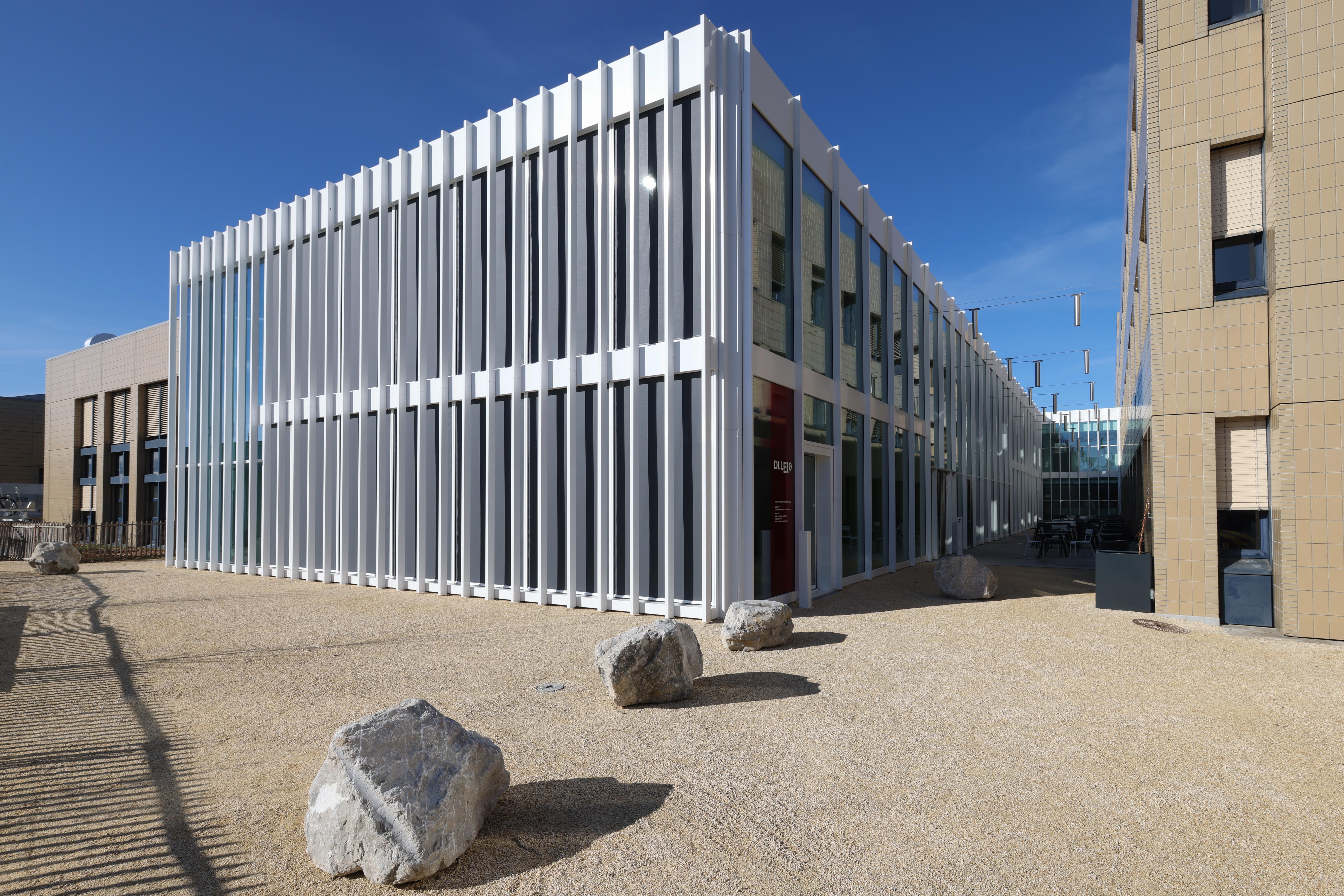EPFL opens a new Makerspace for project-based learning

The SPOT © Alain Herzog 2022 EPFL
The new mechanical and electronic prototyping Discovery Learning Lab – known as the Student Prototyping and Outreach Tank, or “SPOT” for short – opened its doors on 25 March. The building houses all the resources students need to work on their projects.
The new mechanical and electronic prototyping Discovery Learning Lab stands proudly on Allée de Savoie, opposite the EPFL Pavilions center. Awarded the Minergie-P label for its low energy consumption, the SPOT – the name chosen by the EPFL community – is a sleek, spacious structure with glass façades that flood the interior with natural light.
At its heart, a 400m² open space with a 10m-high ceiling speaks to the building’s vocation as a place to meet, collaborate, get creative, and do hands-on prototyping work. The facility is open to students working on MAKE, Changemakers, Bachelor’s and Master’s projects, as well as on projects for officially recognized associations. “Hands-on learning equips students with the skills they’ll need to face future challenges“, says Pascal Vuilliomenet, who heads EPFL’s Discovery Learning Laboratories (DLLs). "The changing nature of our society is giving rise to increasingly complex problems that require interdisciplinary responses."
Three separate spaces
What makes this new Makerspace unique? “Having all these resources in one place means that students can work on highly sophisticated projects, says Vuilliomenet. The building is divided into three spaces: the communal areas, which are open 24/7; the mechanical and electronic prototyping workshops, which are supervised and open to students who’ve completed some basic training; and the professional workshops, which can be commissioned to design more complex components. Each space is intended for projects at different stages of maturity. We visited a number of Makerspaces in Denmark, the US and elsewhere. The fact that ours has everything under one roof makes it rather unique.”

Aside from the cutting-edge workshop facilities, the first floor of the building also features seminar and meeting rooms, brainstorming spaces and a computer room with simulation software. The basement, meanwhile, houses a 360° projection room where users can create immersive virtual environments, as well as equipment storage areas. “This new facility is fully aligned with our educational philosophy, which is to give students a solid grounding in scientific concepts as well as the broad-based skills needed to take a project from ideation to completion,” says Pierre Dillenbourg, Associate Vice President for Education and head of EPFL’s Computer-Human Interaction in Learning and Instruction (CHILI) lab.
Understanding real-world problems
The SPOT is also open to students taking classes with a project-based component. “This facility opens up a wealth of new teaching opportunities,” says Pedro Reis, an EPFL professor of mechanical engineering from School of Engineering. This semester Reis uses the new facility to teach his “concurrent engineering project” class, in which students work with sewing machines on a project spanning aspect of mechanical engineering. “Students grapple with real-world challenges,” he explains. “They have to come up with an idea, find the best way to implement it, plan their project and work as a team. These are all important skills they’re gaining.”
Mechanical engineering students Victoria Destras and Zoë Marsaly, who are working on a sustainable fashion concept, say they enjoy the class because it gives them a chance to “roll up our sleeves and make something. We learn a lot of theory at EPFL. But we also enjoy the practical side of things. Here we have the freedom to develop our own project, although the ideation process is difficult.”
Prototyping forces them to deal with problems they might not otherwise have considered. –
As they work through each stage of the project cycle, from brainstorming to prototyping, students have to overcome the same obstacles they will face in their careers. They also come to understand the complexity that’s involved in building certain components. “Students gain a lot more knowledge and skills in the process,” says Julien Delisle, who coordinates the interdisciplinary MAKE projects. “Prototyping forces them to deal with problems they might not otherwise have considered – not least since, as engineers, they’re often well-drilled at applying solutions but less experienced at asking questions and digging deep into an issue or a need. Working on these projects pushes them to think differently and tackle unfamiliar problems. After all, prototypes never work on the first try.”
As well as training students to deal with adversity, project-based learning is also an exercise in interdisciplinary teamwork. “Working in groups and explaining their projects to coaches and professionals means students have to learn how to communicate with people from different backgrounds and find a common language,” says Samuel Cotture, who coordinates the Student Kreativity and Innovation Laboratory (SKIL). As manager of the SPOT, he will be responsible for facilitating interdisciplinary collaboration and bringing the new building to life, including through “repair cafés” and other events.